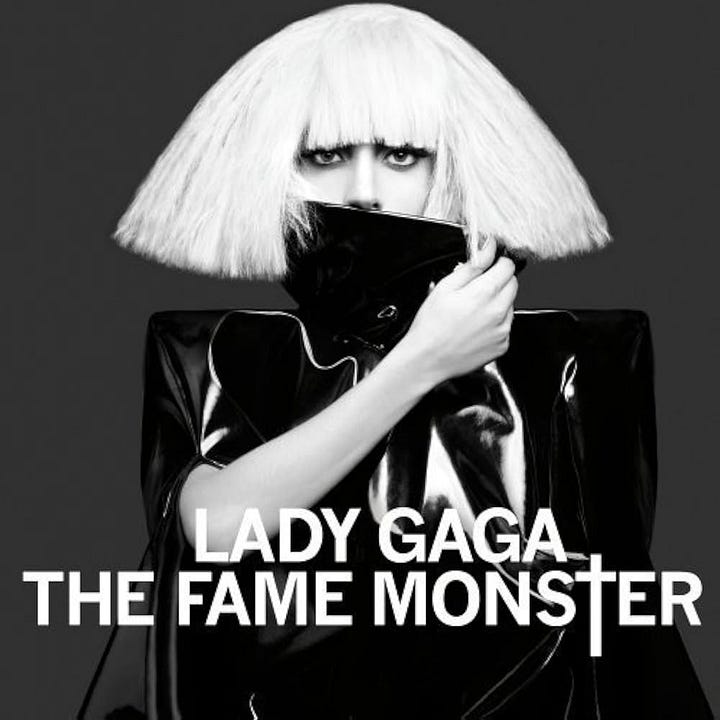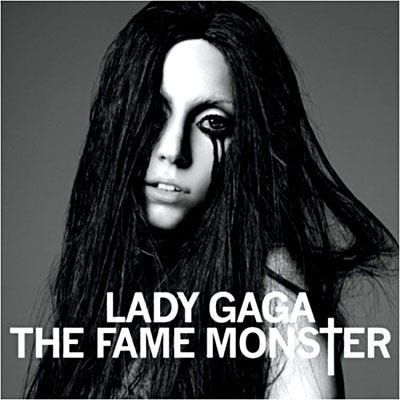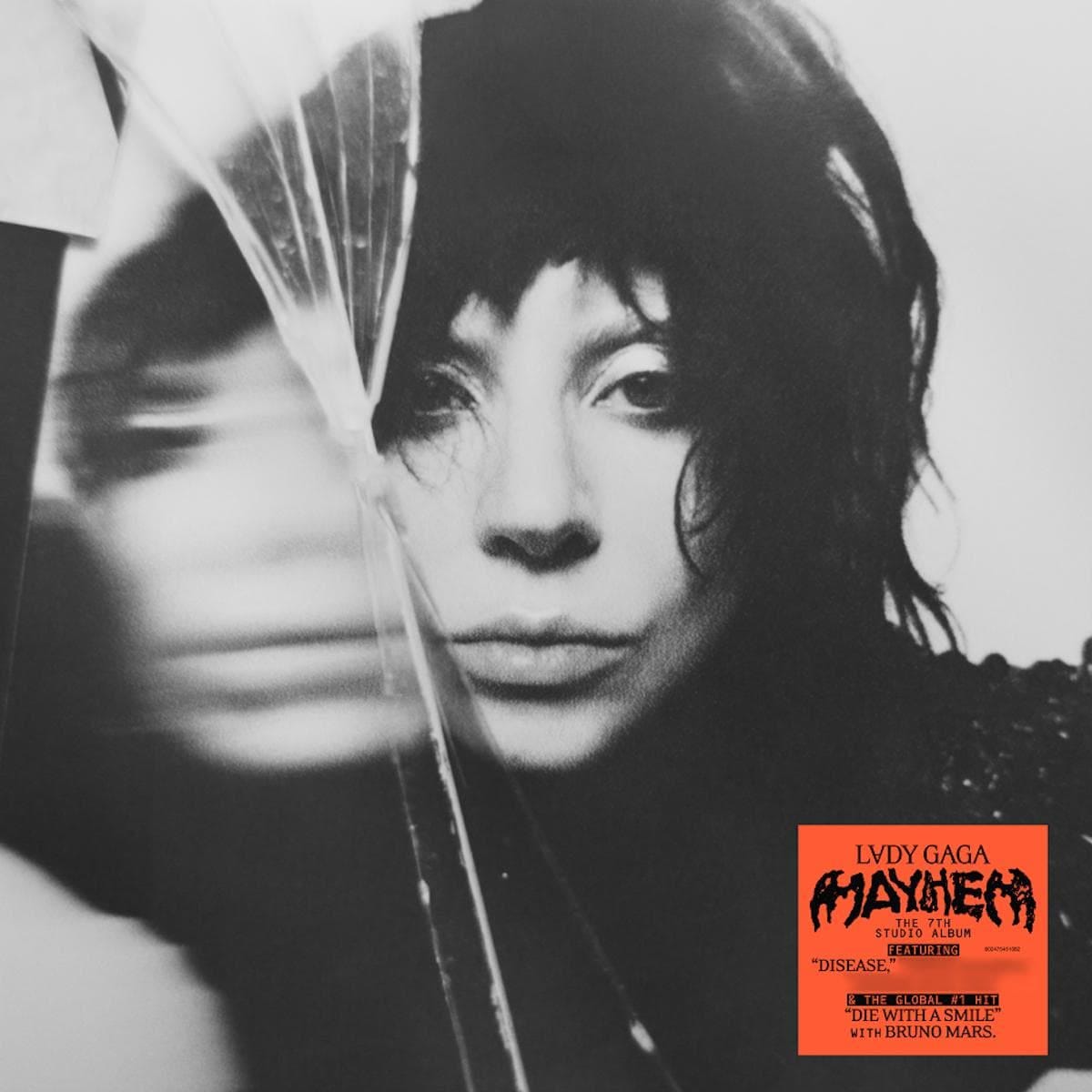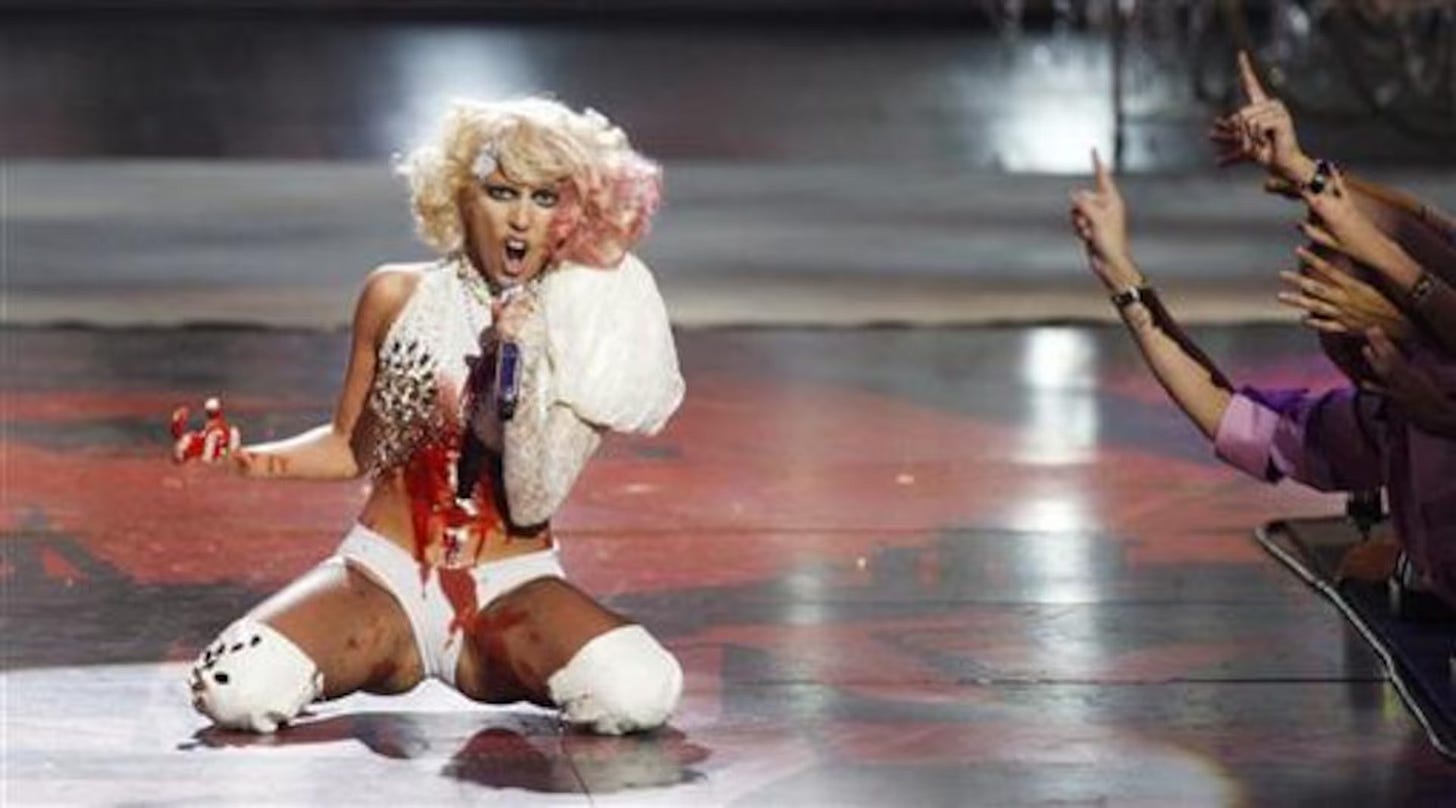I’m only motivated to write about art that brings me to tears, but fortunately for readers I once wept watching a drag queen wearing a prosthetic baby bump lipsync to Aretha Franklin. The instant “There are no more tears to cry” left Lady Gaga’s lips in the Disease music video, my own tears fell. “We are so back!” I shouted to a room full of no one.
MAYHEM resurrects the Gaga that I fell in love with as a teenager. She was an avatar of who I could become if I just stopped caring so much about what people thought of me. I felt most comfortable dressed in head-to-toe black while wearing half a pen’s worth of eyeliner smudged across my face, but I shifted my style to look like less of a problem to my teachers and the conservative adults around me.
Meanwhile, she offended people’s vision by oozing fake blood on a stage and offended their noses by wearing a dress made of raw meat. She’s one of the people who inspired me to move to NYC—she convinced me the city was a place where I would find other others who felt like if they didn’t create something, their very skin would split open.
Even when she sang about love, she positioned it beside pain, which was perfect as a girl who preferred drowning in the depths of limerence to floating on the waves of adolescent love. It was safer to pine because the second someone returned my feelings, I knew my future was at risk: girls far smarter or more talented than I was abandoned their dreams to follow a boy or raise their unexpected child. Many of them probably wouldn’t change their choice for the world, but I knew in the very depths of my soul that the only path I could survive was one very, very far away from that place. Dramatic? Yes! Accurate? Absolutely.


In Gaga, I saw the parts of myself that I was most afraid of others seeing: weirdness, vulnerability, horror—but also the parts of myself that I most loved: creativity, honesty, the ability to somewhat speak French.
Her music held chaos and destruction, captured the incessant pang of longing that I chased and cradled. My diary entries from the time oscillate between depictions of obsessive want and abject terror at being wanted back alongside straightforward declarations that I was absolutely meant to be alone forever with only my art to keep me warm.
MAYHEM dropped in the twilight of my Saturn return, during a season of feeling nearly as unmoored as I did when The Fame Monster debuted. Watching Gaga fight off different versions of herself in “Disease” felt like my own fighting with all of the selves within me. The self who would sooner be hit by a car than embarrass my loved ones. The self who careens toward chaos. The self who shudders at the sight of her own shadow. The self who feels transcendent on a stage. The self that wedges herself against walls in the shadows. The self who is so proud of her messiness and sensitivity and the self that is ashamed of the same qualities.
MAYHEM feels like Gaga not only accepting but also celebrating her disparate parts. Many of the lyrics and some of the beats are dark, but there’s also so much joy and effervescence. Echos of The Fame/The Fame Monster ring throughout, but it also felt elevated and playfully experimental in a way that still amazes me nearly three months later. On my first listen, I enjoyed the first ten songs more than the final four, but my opinion changed after listening to her talk about the album on Las Culturistas. She wanted the album to feel chaotic, but by the end, she wanted the mayhem to be over. Listening through that lens makes the experience feel more hopeful, like no one has to stay locked into disarray forever—they can enjoy the party as long as they like and still end up landing in some soft safe place.
MAYHEM is the kind of project that reminds me just how powerful art is, that growing as an artist isn’t always about mutating into a completely different being but experimenting and evolving. Throughout her career, Gaga has tried on so many different sounds and as she says in the Las Culch interview, there were moments where she felt self-conscious about creating music that was “too pop,” but she embraced that she has a right to work within a genre that she so significantly innovated. Her power is not that she’s fearless—though I fully thought she was when I was sixteen—it’s that her belief in herself and compulsion to create real, authentic art give her enough strength to make life changing work despite the fear.






